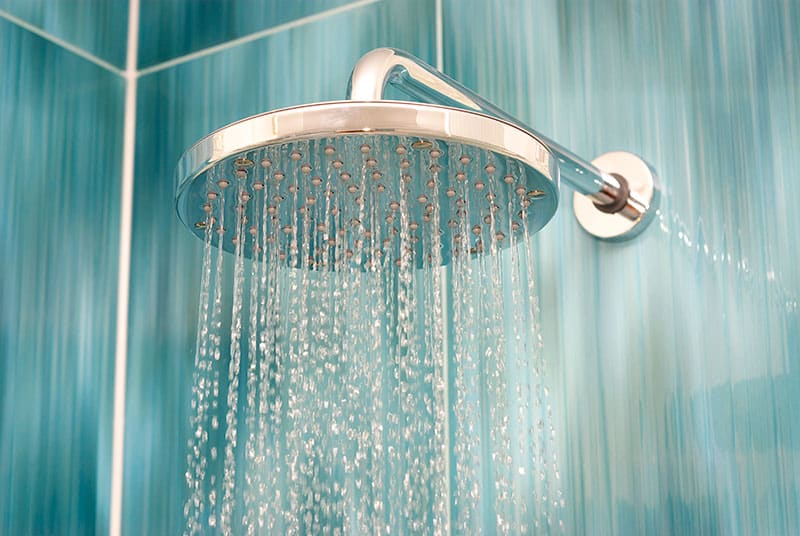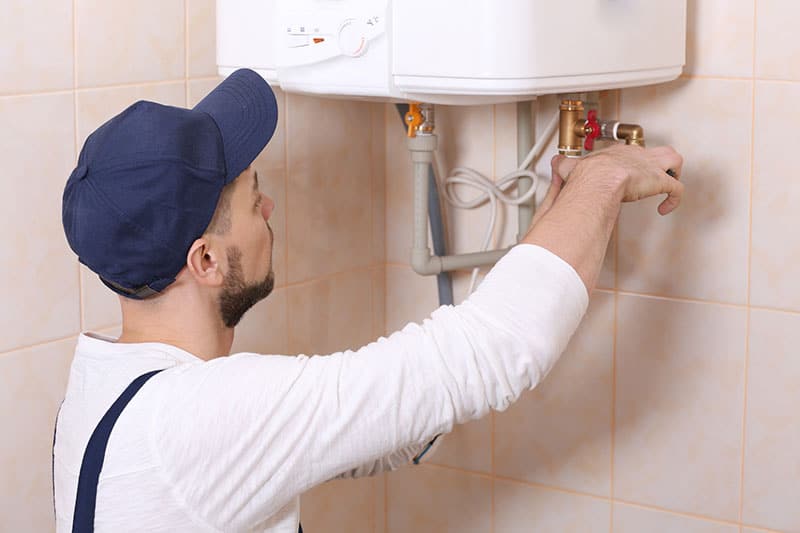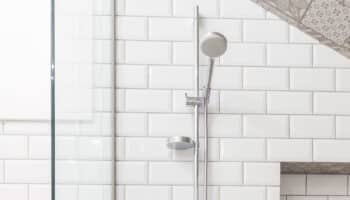Does your shower water temperature fluctuate constantly? Then don’t let what should be a relaxing warm shower leave you with cold feet! This article will discuss some tips that’ll help you regulate the temperature.
If your shower water temperature keeps changing, make sure to check your pressure-balancing valve, your water heater, try replacing the shower’s cartridge, and if those fail to stop the changing temperature, consider servicing your water heater.
Is it your first time fixing a problem with the water temperature in your shower? Then why not check out the rest of the article? It will go through the above-mentioned steps in more detail and help you get your shower fixed in a jiffy.
Shower Water Temperature Keeps Changing
There is nothing worse than an inconsistent water temperature in the shower. I’m sure you are more than familiar with the following scenario.
The hot water in the shower seems to be running perfectly. You’re in the middle of belting out one of the classics to your non-existent bathroom audience. Everything is fine until someone starts washing up the dishes downstairs and…
BANG!
Ice-cold water starts racing out of the showerhead. Or if it’s not the washing up that does it it’s the toilet. One flush and…
BANG!
More ice-cold water begins to pelt over you. And if your shower is as off the wall as mine was then just about anything sets it off. You only have to look at it the wrong way and…
BANG!
Ice-cold water comes running through the pipes and leaps straight at you.
What can you do to stop the water temperature in your shower from fluctuating? Take a look at the following mini-guide. It will discuss four things that you can do to keep the water temperature in your shower steady.
Check Your Pressure-Balancing Valve
Does the water temperature in your shower change when you do any of the following:
- Flush the toilet
- Open the water faucet in the kitchen
- Start the dishwasher
If so, then you may have a problem with your pressure-balancing valve. The pressure-balancing valves open and close depending on the water flow in the pipes. If the water begins to run either too hot or too cold, then the valve kicks in. But, if the valve isn’t working properly, the water pressure could run low.
So what do the toilet, the water faucet, and the dishwasher have to do with the valve? The valve regulates pressure changes when the toilet, faucets, and dishwasher cycle on. These lower the pressure and make the cold or hot water levels drop inside the pipes. A faulty valve could make up for the drop in pressure by forcing freezing cold water out of the showerhead. And as you’ve likely experienced, that’s not pleasant at all.
Unfortunately, a problem with a pressure-balancing valve is really tricky to fix. If you think your shower has a problem with its pressure-balancing valve you must call a plumber.

If the pressure-balancing valve isn’t working properly it can cause low water pressure and sudden changes in temperature
Check Your Water Heater
Many things could cause a temperature change in your shower. The majority of them stem from problems with your water heater. The best thing to do is to run various tests on your water heater that will help you to isolate the problem.
The following is a list of tests that you can run to check the efficiency of your water heater.
Insufficient Sized Water Tank
Your water heater may be struggling to heat the water consistently if the tank is too small. You can test the efficiency of your water tank by doing the following:
- Run the hot water in one shower. Keep all other water faucets closed. Did your water temperature remain consistent? If so, then you can conclude that the problem lies with the combination of other appliances.
- Run the hot water in both showers. Did the water temperature begin to fluctuate in one of the showers? If so, then you can conclude that the water tank is too small. It cannot keep up with the demand from two showers.
Tripped Thermostat
Your water heater may be malfunctioning if its thermostat has tripped. If the thermostat has tripped, there will be nothing to alert the system that the water temperature is dangerous. You can test it by doing the following:
- Run the water in the shower. Does it become too hot? If so, then you may have a tripped thermostat.
- Reset the thermostat. This should regulate the temperature. Run the water again to test it. If the thermostat trips often it may be broken. You should call a professional to fix a broken thermostat.

If you suspect the thermostat is broken call a professional
Tripped Circuit Breakers
Your water heater will malfunction if the circuit breakers trip. If your water heater is electric you can test this by doing the following.
- Restart your heater by flipping the breakers back. This should regulate the water’s temperature.
- Run the hot water in the shower. If the breakers are constantly tripping, you may have a more serious problem. You should call an electrician if the breakers continue to trip when you run the shower.
Replace the Shower Cartridge
There’s a lot of demand for water in your home. Large appliances battling for water can disrupt the flow of warm water in your shower. Do you have temperature problems when any of the following run while using the shower?
- The toilet
- The washing machine
- The dishwasher
- A faucet (in the bathroom, kitchen, or even in the garden).
If your shower is struggling to keep the water warm while any of the above are running, then you could have a problem with your shower cartridge.
But how can you fix the problem? Take a look at the steps below that will help you to install a new shower cartridge.
- Turn off the water. Stop the supply of water to the shower at the faucet.
- Remove the handle. Use an Allen wrench to remove the handle. You can remove the handle adapter with a screwdriver.
- Replace the cartridge. Remove the metal clip inside the handle. This clip holds the cartridge in place. Slide in the new cartridge and replace the cartridge retainer clip.
- Install the scald guard. Install the guard. Open the faucet while you do so that you can adjust it correctly.
- Replace the handle. Use a screwdriver to put the handle adapter back in place. Replace the handle.
Descale the Water Heater and Check for Blockages
Your water temperature problem could be a quicker fix than you think. It might be fluctuating due to a problem with one of the following:
- A build-up of carbonates, rust, and other deposits inside the water heater.
- A blockage in the vent pipes by vermin, nests, or other debris.
What can you do if a blockage or mineral deposit build-up is affecting your water temperature? Take a look at the following information for help:
| Problem | Solution |
| Limescale build-up in the water heater. Caused by rust, oxides, and other mineral deposits. These inhibit the water heater from working properly. | Use a water heater descaling kit every 18 months. If you live in a hard water area use the kit every 12 months. This will remove the build-up of deposits inside the heater. |
| Vent pipes leading away from the water heater are blocked. They’re blocked by nests, vermin, and other debris. | Clean out the vents and pipes to remove the blockage. |
Why Your Water Temperature Keeps Fluctuating
Is the water temperature in your shower somewhat unstable? Then that could be for many reasons. Here are some of the most common causes of fluctuating water temperatures:
- A faulty pressure-balancing valve
- An insufficiently sized water tank
- A tripped thermostat
- Tripped circuit breakers
- A faulty shower cartridge
- Limescale in the water heater
- Clogged pipes leading away from the water heater
Conclusion
Fluctuating temperatures in a shower can be uncomfortable or even dangerous. Temperatures that plummet and then suddenly soar could scald you. I’m sure this article has helped you to pinpoint the reason why the temperature in your shower changes. It has also no doubt got you on the way to fixing the problem.
If this article has helped you, then why not check out some more of our free guides and articles? You could even sign up for our email list!
Have a great day!
-Craig







